Manta Point Nusa Penida
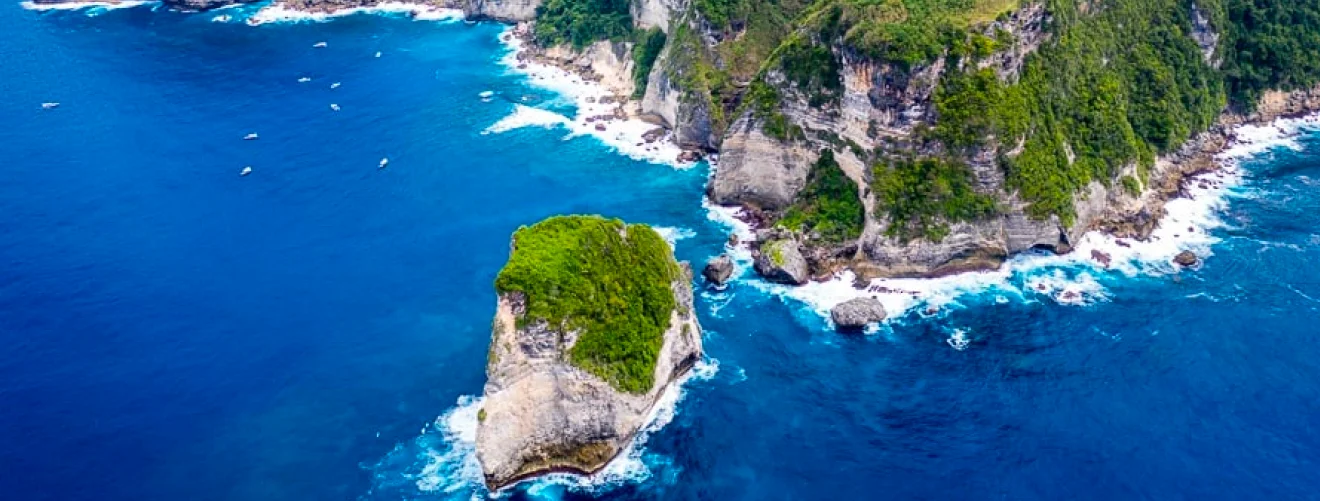
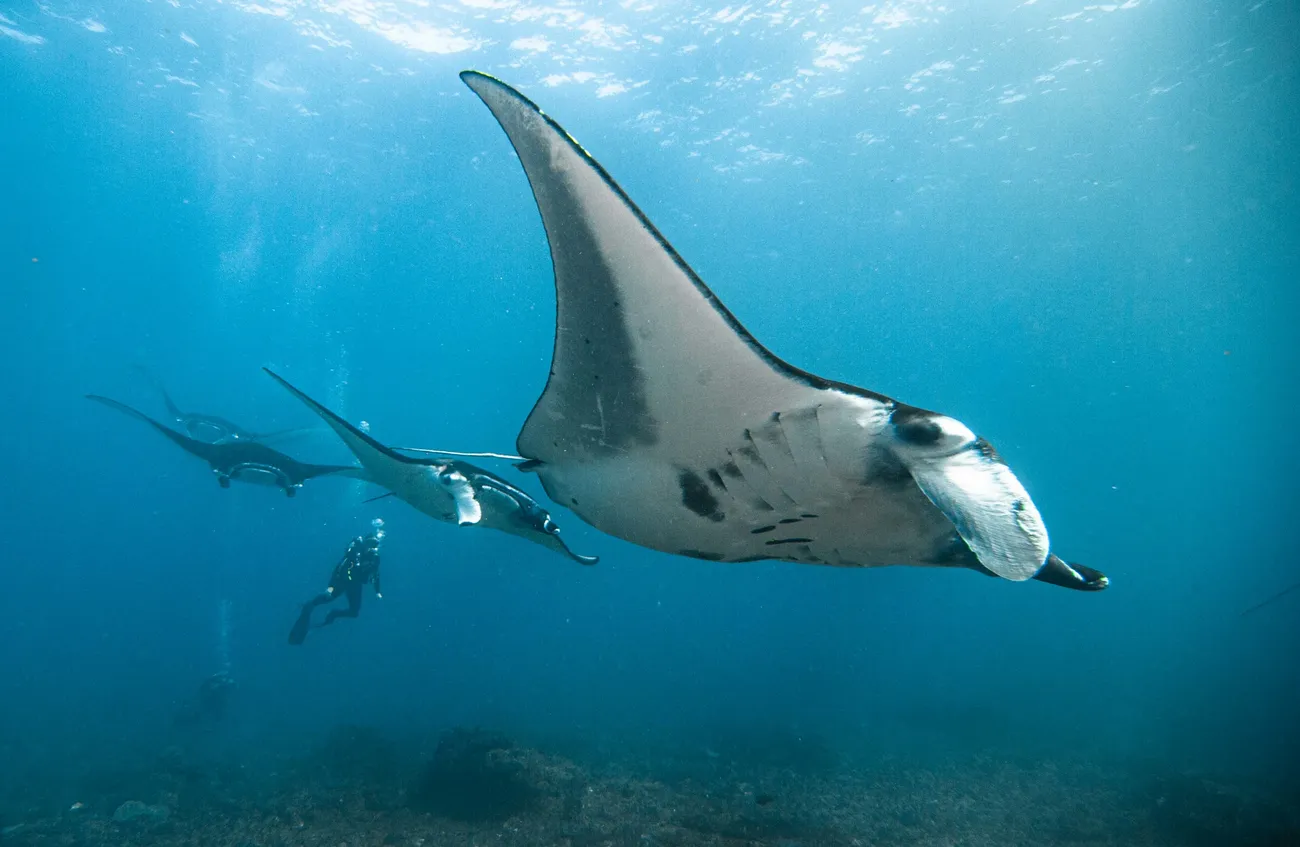
Manta Point Nusa Penida
Nusa Penida , a picturesque island located southeast of the Indonesian paradise known as Bali, has established itself as a globally renowned destination for diving enthusiasts. Its stunning natural landscapes and a variety of captivating dive spots attract underwater enthusiasts from all over the world.
Among the many awe-inspiring locations that grace this picturesque island, one particular spot emerges as an absolute treasure - Manta Point. In the pages that follow, we embark on a journey to unravel the captivating tapestry of Manta Point in Nusa Penida, where the grandeur of these majestic manta rays comes to life within the embrace of their pristine, untouched natural habitat.
About Diving Destination in Nusa Penida
Nusa Penida, a captivating island located in Indonesia, has rightfully earned its reputation as an absolute paradise for diving enthusiasts. Nusa Penida's acclaim arises from its remarkable features that truly delight divers. When you explore the underwater realm of Nusa Penida, You'll encounter pristine waters filled with a rich and colorful variety of marine life, alongside captivating coral reefs that gracefully sway beneath the ocean's surface.
What distinguishes Nusa Penida is its strategic position in the Coral Triangle, a geographical wonder renowned for hosting some of the most exceptional and diverse underwater ecosystems on Earth. This unique positioning makes Nusa Penida a hotbed of biodiversity, attracting both novice and seasoned divers from around the world.
Among the numerous diving spots that Nusa Penida offers, one shines as an absolute must-visit for those seeking an unforgettable and thrilling encounter with the ocean's gentle giants. That spot is none other than Manta Point, where dreams of connecting with these magnificent creatures can become a breathtaking reality.
At Manta Point, You'll have the exceptional opportunity to meet the majestic manta rays up close. While Nusa Penida and Manta Point offer a chance to embark on this incredible journey, it is imperative that we approach this privilege with responsibility and respect for the marine environment. As passionate divers and advocates for the preservation of our oceans, it is our duty to prioritize and actively engage in conservation efforts, ensuring that these gentle giants continue to thrive and that the breathtaking underwater world they call home remains intact for future generations to marvel at and cherish..
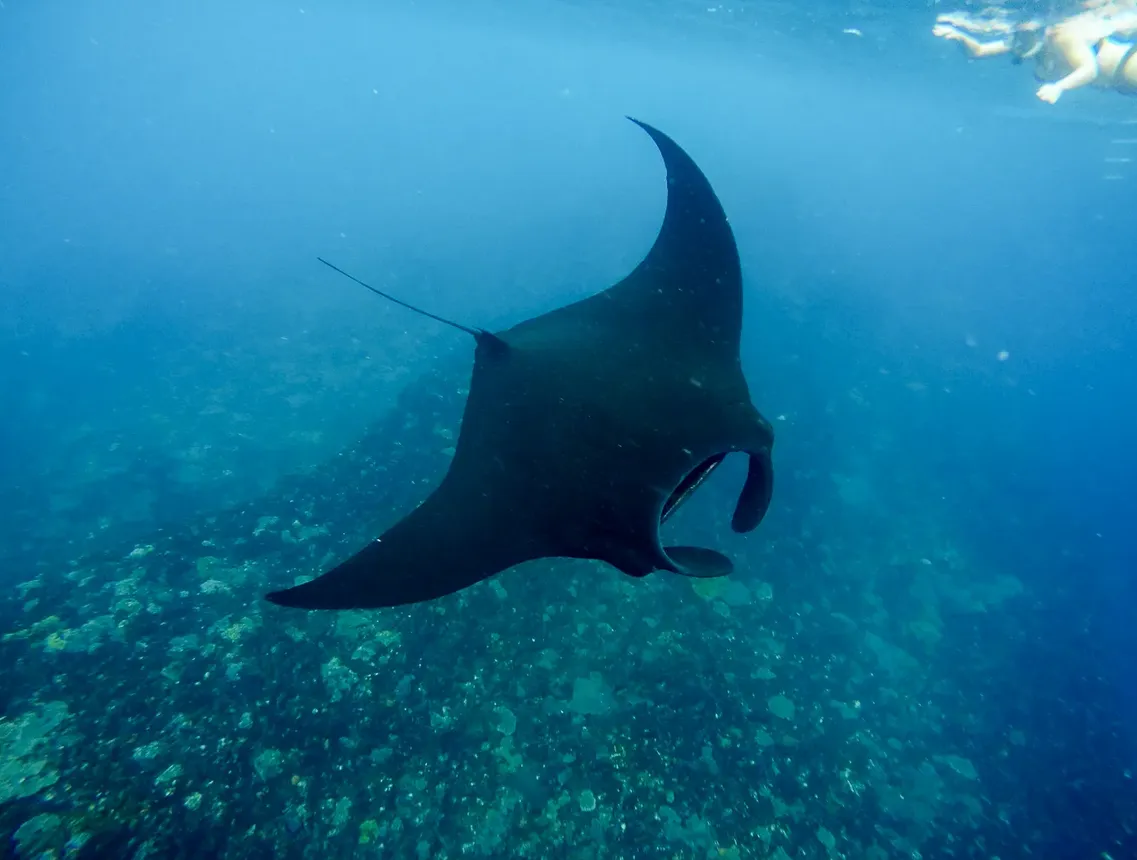
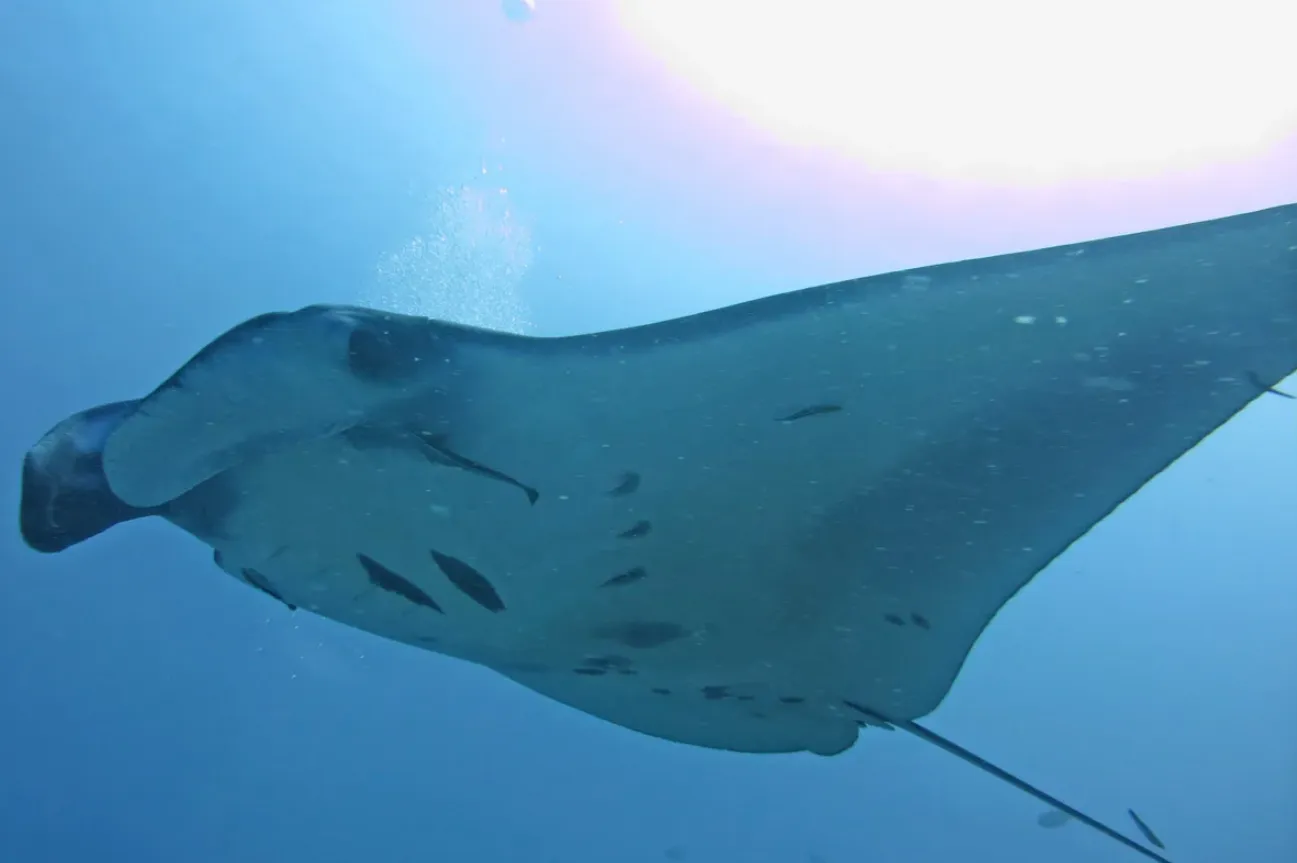
Manta Point in Nusa Penida
Manta Point, situated off the shores of Nusa Penida in Indonesia, holds a well-deserved reputation as one of the most extraordinary diving spots worldwide. This underwater haven is famous for the regular and exhilarating encounters with the captivating manta rays, affectionately known as the 'gentle giants' of the sea. The site's allure to divers is attributed to the awe-inspiring experiences it provides.
Picture yourself descending into the clear, inviting waters of Manta Point, where an enchanting underwater realm awaits. As you gracefully move through the ocean, You'll soon be embraced by these elegant beings, some with wingspans reaching an impressive 23 feet (7 meters). Witnessing these magnificent manta rays glide gracefully through the water is truly awe-inspiring.
These magnificent creatures engage in filter feeding, and Manta Point is a frequent gathering spot where they come together to dine on plankton-rich currents, offering an amazing chance for close-up observation.
However, this unique and delicate ecosystem faces threats from human activities, including pollution and habitat degradation. As conscientious divers and dedicated champions of ocean preservation, it is crucial for us to give top priority to and actively participate in conservation initiatives aimed at safeguarding these magnificent creatures and the awe-inspiring underwater realm they inhabit.
Manta Rays: Graceful Giants of the Ocean
Manta rays, alternatively referred to as ?Devil Rays,? stand out as truly mesmerizing denizens of the oceanic realm. These remarkable leviathans are widely distributed across the globe, but one of the preeminent locales for intimate encounters with them is Nusa Penida. Let us embark on a comprehensive exploration of the captivating world of manta rays:

Physical Characteristics
Manta rays, in all their magnificence, are distinguished by their immense proportions, boasting wingspans that can surpass an astonishing 20 feet (approximately 6 meters). Their defining features include diamond-shaped bodies and a distinctive coloration scheme that sets them apart, along with two prominent cephalic fins that bear a striking resemblance to horns.
It is these cephalic fins that have earned them the moniker of ?Devil Ray.? These unique appendages serve a dual purpose, enabling these creatures to gracefully navigate their aquatic domain while also facilitating the efficient capture of sustenance.
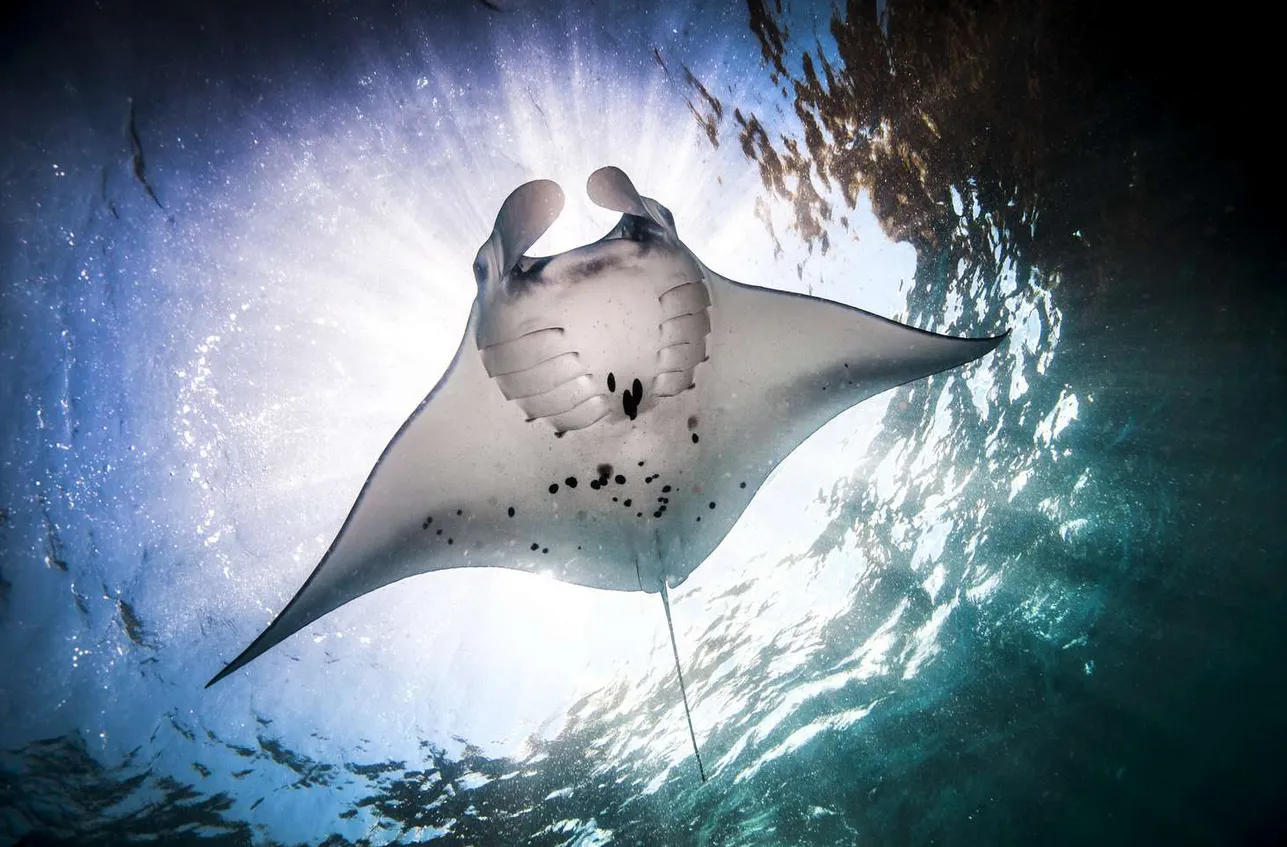
Behavior of Manta Rays
The behavior of manta rays is nothing short of fascinating, rendering them a sheer delight for underwater enthusiasts and observers alike. Manta rays, as filter feeders, predominantly subsist on plankton and minuscule fish. Their feeding strategy involves maintaining an expansive and open-mouthed posture as they traverse the ocean waters, deftly ensnaring their microscopic prey. This technique is executed with such fluidity and precision that it adds to the overall allure of these gentle giants.
In addition to their distinctive feeding habits, manta rays are renowned for their acrobatic displays, which further enhance the exhilaration of encountering them beneath the waves. Their repertoire of antics includes audacious leaps above the water's surface and graceful somersaults, each spectacle serving to underscore the remarkable grace and agility of these oceanic ambassadors.
The Enchanting Habitat of Manta Rays
Manta rays, with their graceful and captivating presence, not only capture the imagination but also reveal a profound connection to their intricate habitat. The mesmerizing world of manta rays encompasses a tapestry of essential elements, each contributing to the overall allure and sustenance of these remarkable creatures.
Coral Reefs and Cleaning Stations
Manta rays exhibit a predilection for coral reefs and the serene sanctuaries known as cleaning stations. In these underwater oases, a symphony of cleaner fish and other marine denizens diligently tend to the manta rays, performing the vital task of removing pesky parasites from their skin. These cleaning stations emerge as pivotal hubs in the ecosystem, safeguarding the health and hygiene of manta rays and thereby ingraining themselves as an indispensable facet of their habitat.
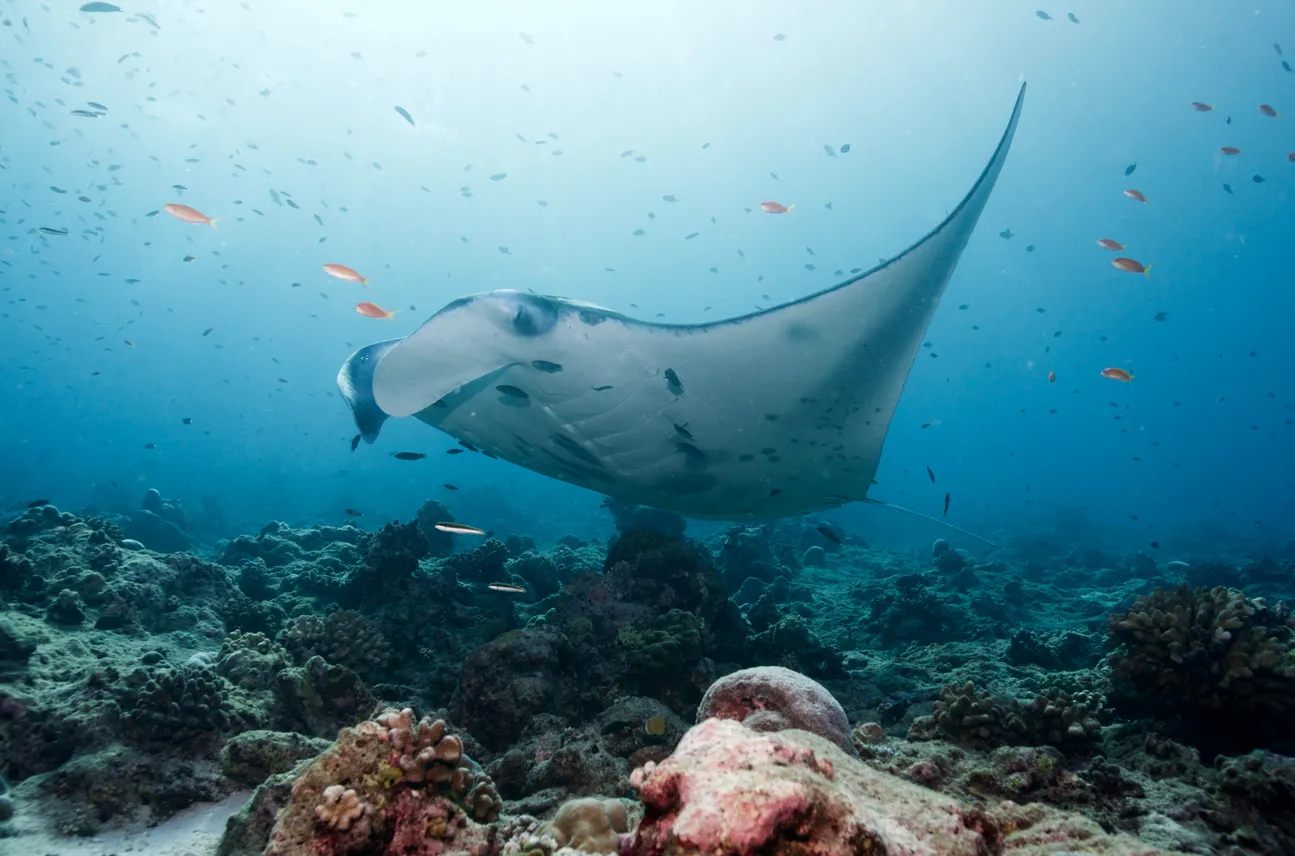
Water Temperature and Currents
The harmonious interplay of water temperature and oceanic currents in the environs of Nusa Penida plays a decisive role in summoning the manta rays to these aquatic realms. Manta rays gravitate toward areas where the water temperature is optimally conducive to their presence.
Furthermore, the influence of robust ocean currents, laden with nutrient-rich waters, beckons the manta rays, as these currents fortify the primary sustenance source of manta rays, the minuscule yet bountiful plankton.

Manta Point Nusa Penida's Unique Ecosystem
Manta Point, nestled amidst the crystalline waters surrounding Nusa Penida, unveils an enigmatic ecosystem that manta rays have come to call their home. It is here that a harmonious convergence of factors occurs. The vibrant coral reefs, hosting a profusion of marine life, provide the manta rays with both sanctuary and sustenance. The cleaning stations, dotted throughout the area, offer a safe haven where manta rays receive meticulous grooming.
The prevailing water conditions at Manta Point align ideally with the manta rays? preferences, creating a magnet for these magnificent creatures. This convergence transforms Manta Point into a veritable hotspot, drawing divers and snorkelers from far and wide in their fervent quest to bear witness to the awe-inspiring spectacle of manta rays thriving in their unspoiled natural habitat.

Diving at Manta Point Nusa Penida
Preparation for the Dive
When embarking on a scuba diving expedition at Manta Point, there are several crucial factors that should be taken into account. First and foremost, divers must possess the requisite certifications and a wealth of experience to guarantee their safety while delving into the captivating underwater realm of Nusa Penida.
Proper preparation is key, and this involves acquiring comprehensive knowledge about the specific dive site, its prevailing conditions, and any potential challenges that may arise during the exploration.


The Dive Experience
Manta Point offers an exhilarating and immersive dive experience, often necessitating a descent to depths ranging from 10 to 20 meters. As divers submerge themselves beneath the surface, they can anticipate not only encountering majestic manta rays but also a remarkable spectrum of marine life, encompassing a vivid tapestry of colorful fish and intricate coral formations.
It is of utmost importance to adhere to ethical guidelines when interacting with these graceful mantas, maintaining a respectful distance to minimize any disturbance to their natural habitat.

Dive Operators and Tours
To maximize the enjoyment and safety of your Manta Point dive adventure, it is highly recommended to opt for a reputable dive operator or tour provider. Nusa Penida boasts an array of dive shops and agencies that offer guided excursions to Manta Point, ensuring a secure and unforgettable experience.
Undertaking thorough research and carefully selecting the most suitable operator is a critical step in guaranteeing a responsible and gratifying dive outing.
Best Time to Dive Manta Point
The best time to plan a dive at Manta Point Nusa Penida, with the primary aim of increasing your chances of encountering the majestic manta rays, depends on choosing the right season. In general, the ideal window for diving at Manta Point falls between the months of April and November. During this time frame, the natural conditions in the underwater environment often become favorable, setting the stage for a memorable encounter with manta rays.
Few key factors contribute to the desirability of this time frame. Firstly, water conditions tend to improve, with more stable and clear waters. Secondly, there is a fortunate increase in plankton concentrations during these months. This increase in plankton serves as a beacon for the graceful mantas, attracting them to gather in the vicinity of Manta Point.


Discover More Dive Sites in Nusa Penida
Nusa Penida, a pristine island nestled in the heart of the Indonesian archipelago, offers a treasure trove of captivating diving sites that beckon adventurous souls to explore the ocean's mesmerizing depths. While Manta Point is undoubtedly a highlight of Nusa Penida's diving scene, this enchanting island has much more to offer divers of all skill levels. Among the array of alluring underwater destinations, You'll find:
Crystal Bay: This enchanting spot is renowned for its crystal-clear waters, which allow for unparalleled visibility of the vibrant marine life and stunning coral formations that thrive beneath the surface. It's a haven for divers and snorkelers seeking an immersive experience in a tranquil underwater paradise.
Toyapakeh: Toyapakeh offers a thrilling underwater adventure with its diverse marine ecosystem. Here, you can encounter schools of colorful fish, intricate coral gardens, and even the occasional sighting of larger marine species. The underwater topography and thriving biodiversity make Toyapakeh a must-visit destination for aquatic enthusiasts.
Blue Corner: For the more adventurous divers, Blue Corner promises an exhilarating experience. This site is famous for its strong currents, which attract pelagic species like sharks and rays. Divers often ?hook in? to a stationary point to witness the spectacle of marine life passing by in the swift current.?
However, as responsible divers and dedicated supporters of ocean conservation, it is paramount that we prioritize and actively engage in efforts to preserve these gentle giants and the mesmerizing underwater realm they call home.
As you embark on your
journey
into the crystal-clear waters of Nusa Penida, you will unveil a world of unparalleled beauty and wonder awaiting your exploration. The underwater realm here, with its clarity and vibrancy, is a testament to the exquisite diversity of marine life and the untouched splendor of our planet's oceans. Dive deep into the azure embrace of Nusa Penida's waters, and you will be rewarded with a profound connection to the mesmerizing wonders of the sea, reminding us all of the importance of preserving these treasures for generations to come.
Frequently Ask Question
Everything you need to know about the product and billing. Can't find the answer You're looking for? Please chat to our friendly team.
See More FAQsDo I need to be a certified diver to visit Manta Point?
How deep is the water at Manta Point?
Are there any safety guidelines for diving or snorkeling at Manta Point?
What other marine life can I encounter at Manta Point?
Join more than 1,000 monthly guests from all around the world visiting us for Scuba Diving, PADI Courses, Snorkeling, and Freediving.
Email or contact us by WhatsApp. We reply promptly between 9AM and 5PM, every day.